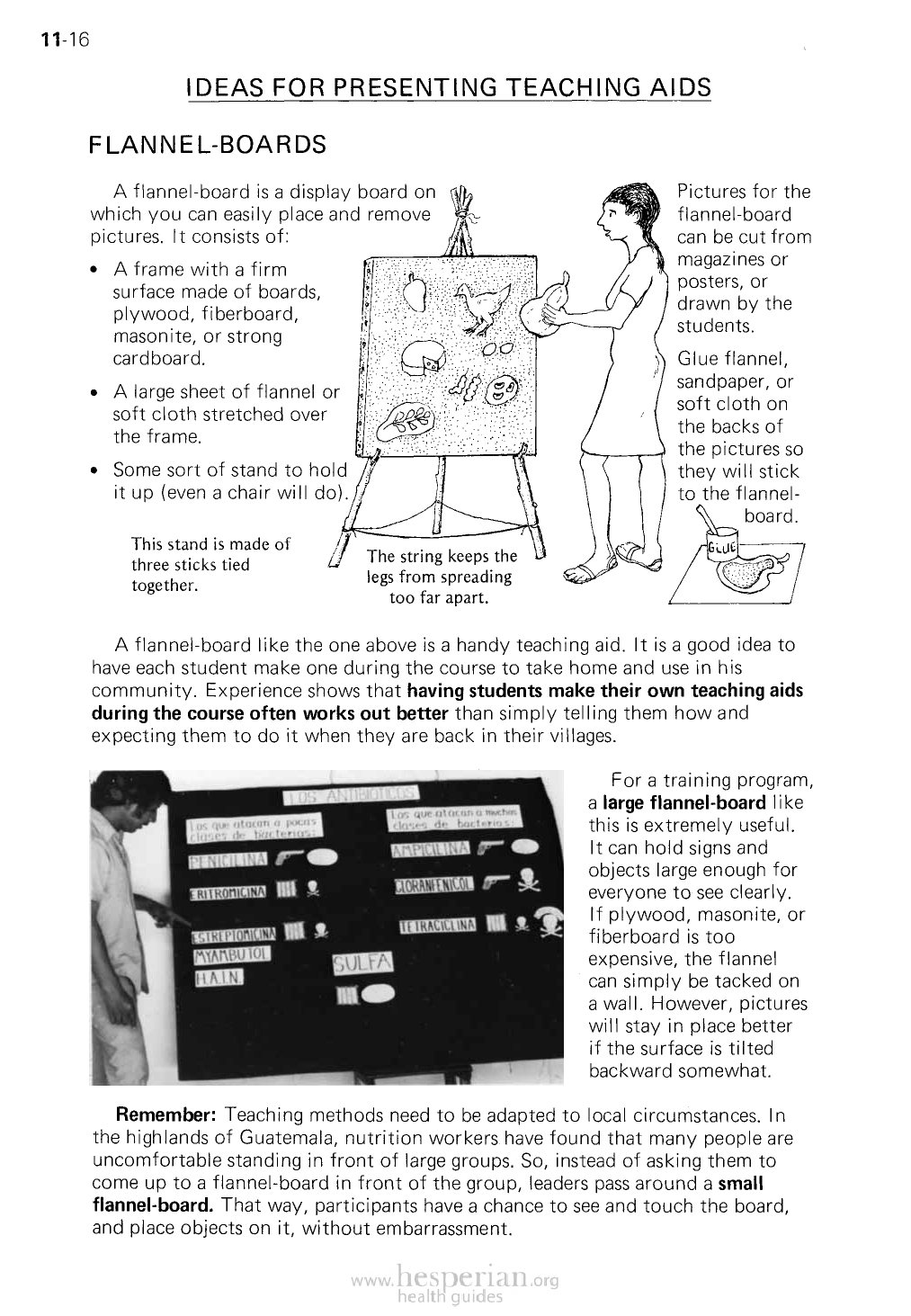
11-16
IDEAS FOR PRESENTING TEACHING AIDS
FLANNEL-BOARDS
A flannel-board is a display board on
which you can easily place and remove
pictures. It consists of:
• A frame with a firm
surface made of boards,
plywood, fiberboard,
masonite, or strong
cardboard.
• A large sheet of flannel or
soft cloth stretched over
the frame.
• Some sort of stand to hold
it up (even a chair will do).
This stand is made
of three sticks tied
together.
The string keeps the
legs from spreading
too far apart.
Pictures for the
flannel-board
can be cut from
magazines or
posters, or
drawn by the
students.
Glue flannel,
sandpaper, or
soft cloth on
the backs of
the pictures so
they will stick
to the flannel-
board.
A flannel-board like the one above is a handy teaching aid. It is a good idea
to have each student make one during the course to take home and use in his
community. Experience shows that having students make their own teaching
aids during the course often works out better than simply telling them how and
expecting them to do it when they are back in their villages.
For a training program,
a large flannel-board
like this is extremely
useful. It can hold
signs and objects large
enough for everyone to
see clearly. If plywood,
masonite, or fiberboard is
too expensive, the flannel
can simply be tacked on
a wall. However, pictures
will stay in place better
if the surface is tilted
backward somewhat.
Remember: Teaching methods need to be adapted to local circumstances. In
the highlands of Guatemala, nutrition workers have found that many people are
uncomfortable standing in front of large groups. So, instead of asking them to come
up to a flannel-board in front of the group, leaders pass around a small flannel-
board. That way, participants have a chance to see and touch the board, and place
objects on it, without embarrassment.